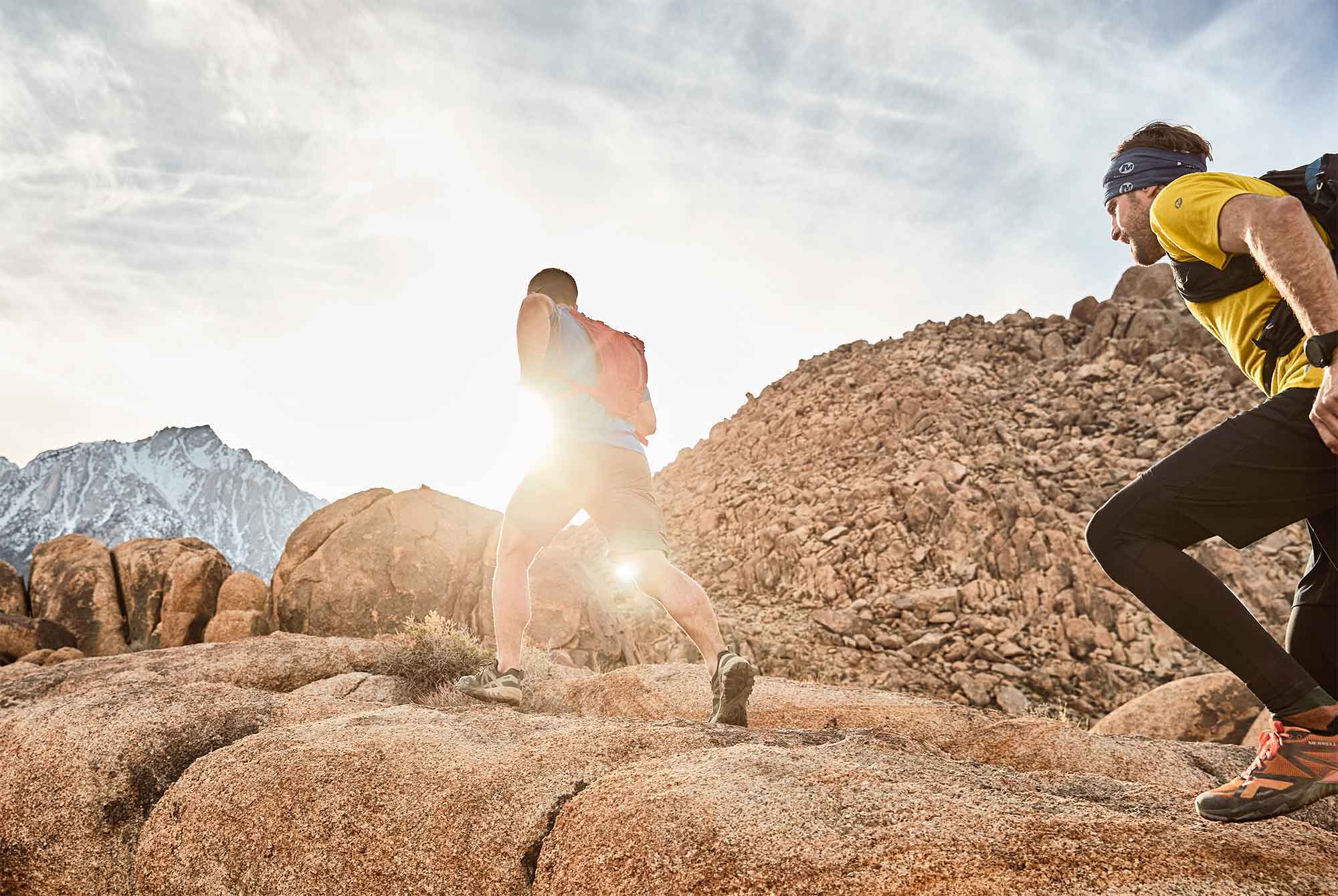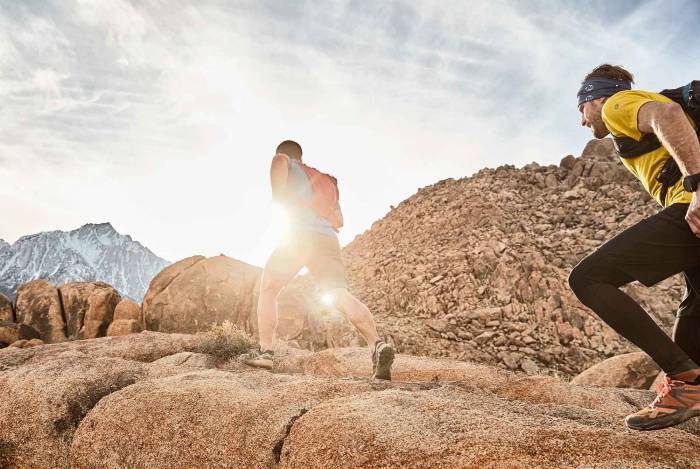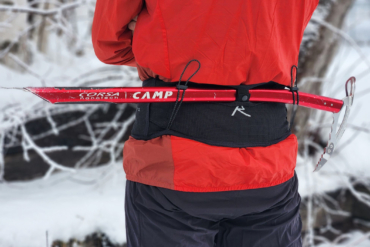From its humble grassroots beginnings in the 1990s, the activity (and obsession) of “fastest known time” has risen to become trail running’s hottest pursuit. Here’s a guide to properly record your FKT.
From iconic routes like the Appalachian Trail to the heights of Mount Everest, thousands of people have pushed limits to establish times and move the needle of human performance. Today, the pursuit of FKTs (fastest known times) has infiltrated hiking and trail-running culture, with weekend warriors and elite athletes alike attempting to set new records around the world.
How to tackle your own FKT? Anyone can participate. Pick a trail, declare your intention on FastestKnownTime.com, and then track it via GPS to show your recorded results once off the trail. We get into the details below.
Recording Your FKT
As FKTs boom in popularity, the community that tracks these claimed record times has built best practices for recording endeavors. A structure is in place so that the efforts are recognized as legitimate. It’s a bummer, but some people do cheat. And several recent high-profile cases have focused the world of FKT to demand better verification when athletes claim fastest times.
Much of the FKT movement relies on the honor system, but the community will scrutinize major claims. And if evidence is lacking or conflicting, expect controversy to arise.
We spoke with Peter Bakwin, founder of FastestKnownTime.com, a site dedicated to documenting the FKT movement. Bakwin explained how to avoid problems, and land cheers instead of jeers, when you claim your next FKT.
There are four distinct steps that will help validate an FKT:
- Announce your intentions on FastestKnownTime.com and contact the previous record holder to explain your goals. They may even offer advice, as it is generally a very supportive community.
- Record your track with a GPS device. On long trails, a SPOT or Delorme device is standard. On shorter attempts, a simple GPS-enabled watch or even a phone with Strava or a similar app may suffice.
- Write a trip report detailing your effort. It should include notes about each day such as landmarks passed, weather, terrain, and how you resupply.
- Take photos along the way. Images of yourself at recognizable places on the trail (and away from roads) help pin down your time and place. They often also contain metadata such as time and GPS stamps the further validate your effort.
Types of FKTs
There are three main types of FKTs. First is the “self-supported” record. For these, hikers can use whatever resources are available to everyone, such as stores, mail drops, or even caches left before the trip (but note that on some routes such as the AT or PCT caching has generally not been used).
“Trail magic” such as a candy bar from a stranger is allowed as long as it is not pre-planned.
Second are “supported” attempts. In these, athletes receive support from a crew along the way. Support crew can cook meals, offer massages, and set up campsites. It allows athletes to move more like trail runners than hikers. But the athlete still must complete the entire trail under their own power.
The third type is “unsupported.” Mostly used on shorter endeavors, it means no support of any kind. You carry everything from start to finish except what you can get from natural sources (basically, water).

It’s worth noting that even among the community of FKT aficionados, the definition of these undertakings is controversial and ever-evolving. Read up on the conversation here.
FKT: Value the Experience
Ultimately, FKTs tend to be a very solo endeavor. You’ll be alone on the trail, and you alone know what happens every step of the way.

While you are moving fast, the experience should be a top priority, according to many elite hikers.
Joe Grant, the record holder for summiting all 57 peaks in Colorado over 14,000 feet and cycling between them, explained it to GearJunkie in an interview.
“The headlines read ‘Colorado Man Conquers All the Peaks,’” he said. “It frustrated me. Honestly, I couldn’t give a shit about the time and I didn’t conquer anything. The experience was so much more powerful than that.”
Bakwin echoed his sentiment, explaining why a trip report is still crucial in our technological era.
“To me, the trip report is still central,” he said. “I think that’s what brings people some personal resonance to what you’ve done and makes it believable. I don’t throw that out because of technology.”
Technology Is Useful in Recording FKTs
Bakwin explained that GPS trackers have been a pitfall for many FKT attempts.
SPOT devices in particular don’t work well under the heavy tree cover of the Appalachian Trail. And any device can drain batteries and not function when needed, he explained.
“The best way to get reliable info is to put it in tracking mode. But if you’re walking under trees all the time, it tries to reach satellite constantly and runs out of batteries,” Bakwin said. “It’s better to go to an opening and press the button to ping the satellite. You just need a few every day.”
And the only way to know your devices is to practice using them.
“I like to say that you wouldn’t go into the wilderness not knowing how to use your stove,” he said. “You need to know how to use a satellite tracker – and its limitations.”
FKT: A Sport Alone
FKTs will always rely on the honor of participants. And the burden of proof to record an FKT rightfully falls on them.
As Bakwin explained, there are many races where you can run against others head-to-head. Everywhere from track and field and cross country to ultra-marathons like the UTMB, runners have a chance to run the same course on the same day.

FKTs are different. They require independence, creativity, and a will to hold oneself to high standards.
“There are no rules, only guidelines,” Bakwin said. “They are for the athlete’s benefit so people believe you. I’ve never said that just because you don’t have a SPOT it doesn’t count.”
But there are ways to pretty much guarantee it counts. It’s best to get a GPS device, know how to use it, and follow the guidelines outlined above.
Embrace the community, and be open about your attempts. Happy trails!
–This article is sponsored by Merrell. Enter the Find Your FKT contest here and see all details on the MQM FLEX line at Merrell.








